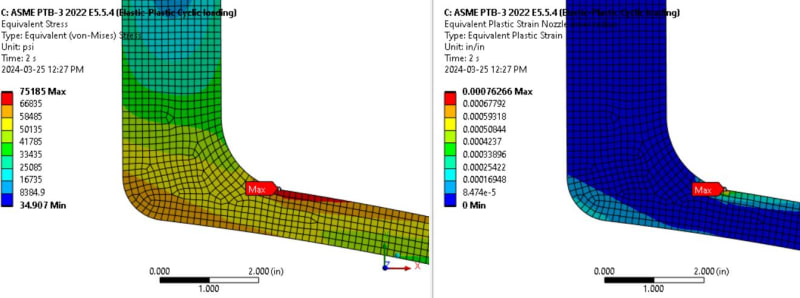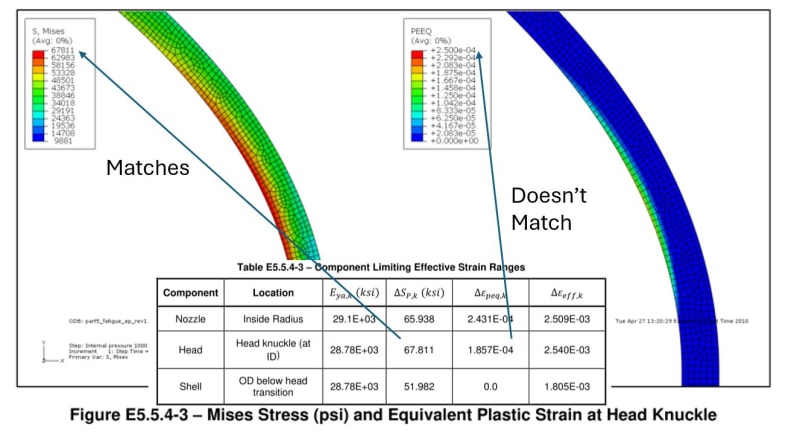Hello All
I have a question regarding ASME PTB_3 Example Problem 5.5.4 (Elastic-Plastic stress Analysis):
***
In Table E5.5.4-3 the values of Equivalent stress and plastic strain range doesn't match with the Figures E.5.5.4-2 and 5.5.4-3.
Am I missing something here? How the values of Equivalent stress and plastic strain range are different in Figure and Table.
***
Thanks in advance.
I have a question regarding ASME PTB_3 Example Problem 5.5.4 (Elastic-Plastic stress Analysis):
***
In Table E5.5.4-3 the values of Equivalent stress and plastic strain range doesn't match with the Figures E.5.5.4-2 and 5.5.4-3.
Am I missing something here? How the values of Equivalent stress and plastic strain range are different in Figure and Table.
***
Thanks in advance.



